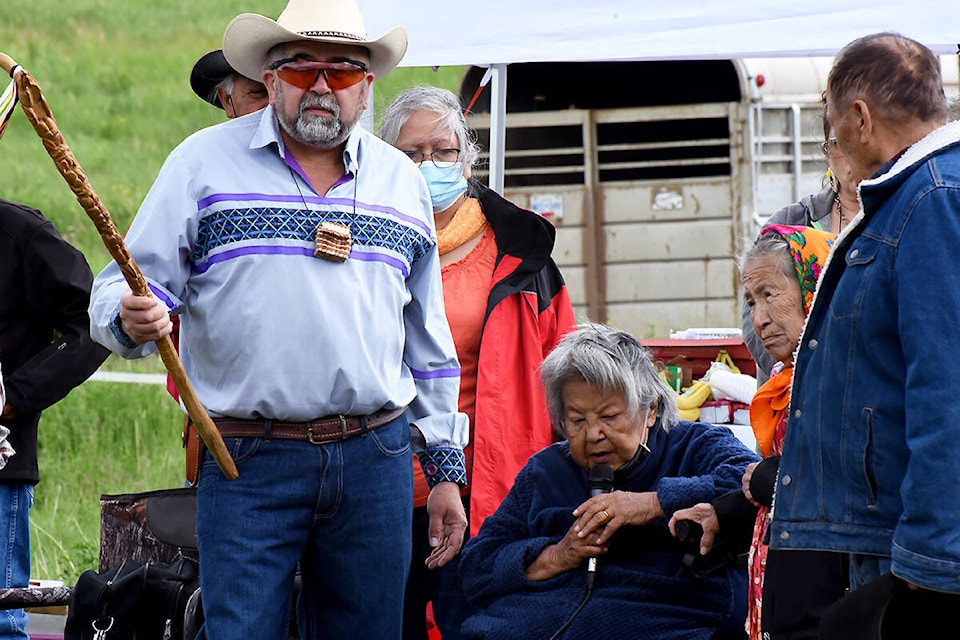Responding to the preliminary findings of 93 potential graves at the former St. Joseph’s Mission Indian Residential School by Williams Lake First Nation (WLFN) last week, the Tŝilhqot’in Nation announced it is coming together to heal and continue its work to develop its own governing body to support its people.
“We’ve been doing this work for quite some time, long before the announcement,” said Tshilqot’in National Government tribal chair Tl’etinqox Chief Joe Alphonse.
Alphonse added his nation had suggested that WLFN hold off announcing the findings in December as originally planned.
“Christmastime was not the time to be releasing that information. It is a time of year when suicide rates are already at the highest without adding stress.”
Describing the investigation as the “tip of the iceberg,” Alphonse said it has only begun to “scratch the surface of the atrocities ” that were committed at St. Joseph’s Mission.
“Some of these burial sites are not even on that property.”
Alphonse reiterated his criticism of the St. Joseph’s Mission investigation being under the control of Williams Lake First Nation, noting all Nations need to be involved moving forward in order to uncover the full truth.
“Not one community should have the right, I would say. Any Nation that lost bodies and has people buried there should be involved. What a powerful statement that would have been if all the local communities had their leadership up there during the press conference last week.”
While the mission is in the traditional territory of WLFN, thousands of children from the Secwépemc (Shuswap), Tsilhqot’in (Chilcotin), St’at’imc (Lillooet), Dakelh (Southern Carrier) and Nuxalk (Bella Coola) nations attended the school.
Alphonse acknowledged WLFN leaders have reached out to him to discuss the matter further. He told the Tribune, however, he would only meet with WLFN chief and council if their elders were there as well.
Chief Willie Sellars has previously told the Tribune he will not discuss the matter in the media.
Alphonse did note that he is glad discussions surrounding residential schools have been opened up, after the findings at the former Kamloops Indian Residential School last May.
“You need someone that is willing to listen. Up until that happened in Kamloops, people were not willing to listen.”
The aim of the TNG will be to support children and families at home and based in the traditional knowledge and ways of its people.
“For us, that is the only way we can heal and ensure a brighter future for our people,” he said.
news@wltribune.com
Like us on Facebook and follow us on Twitter
